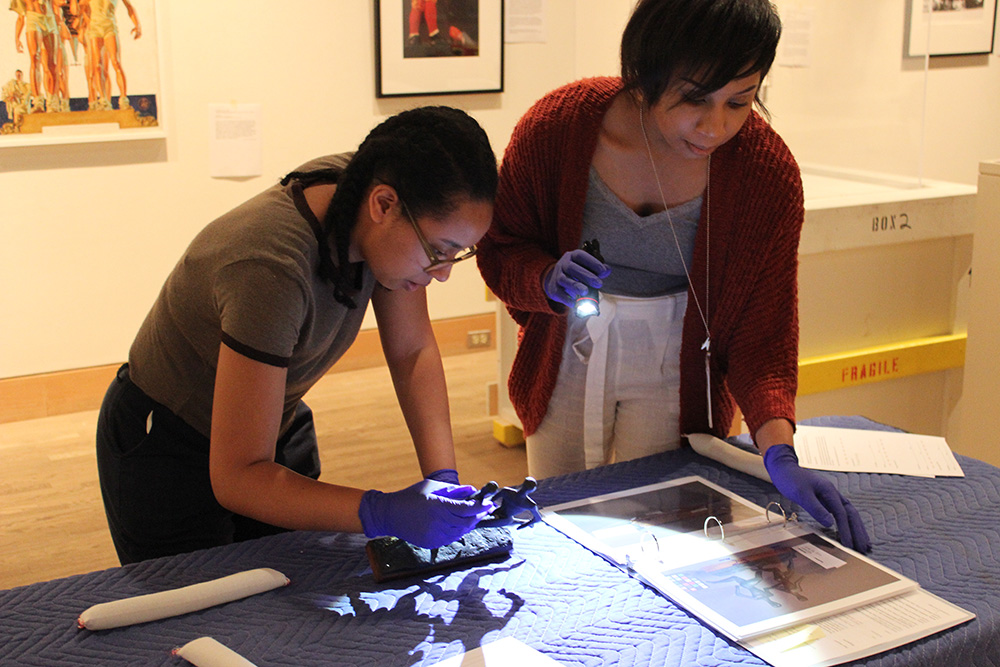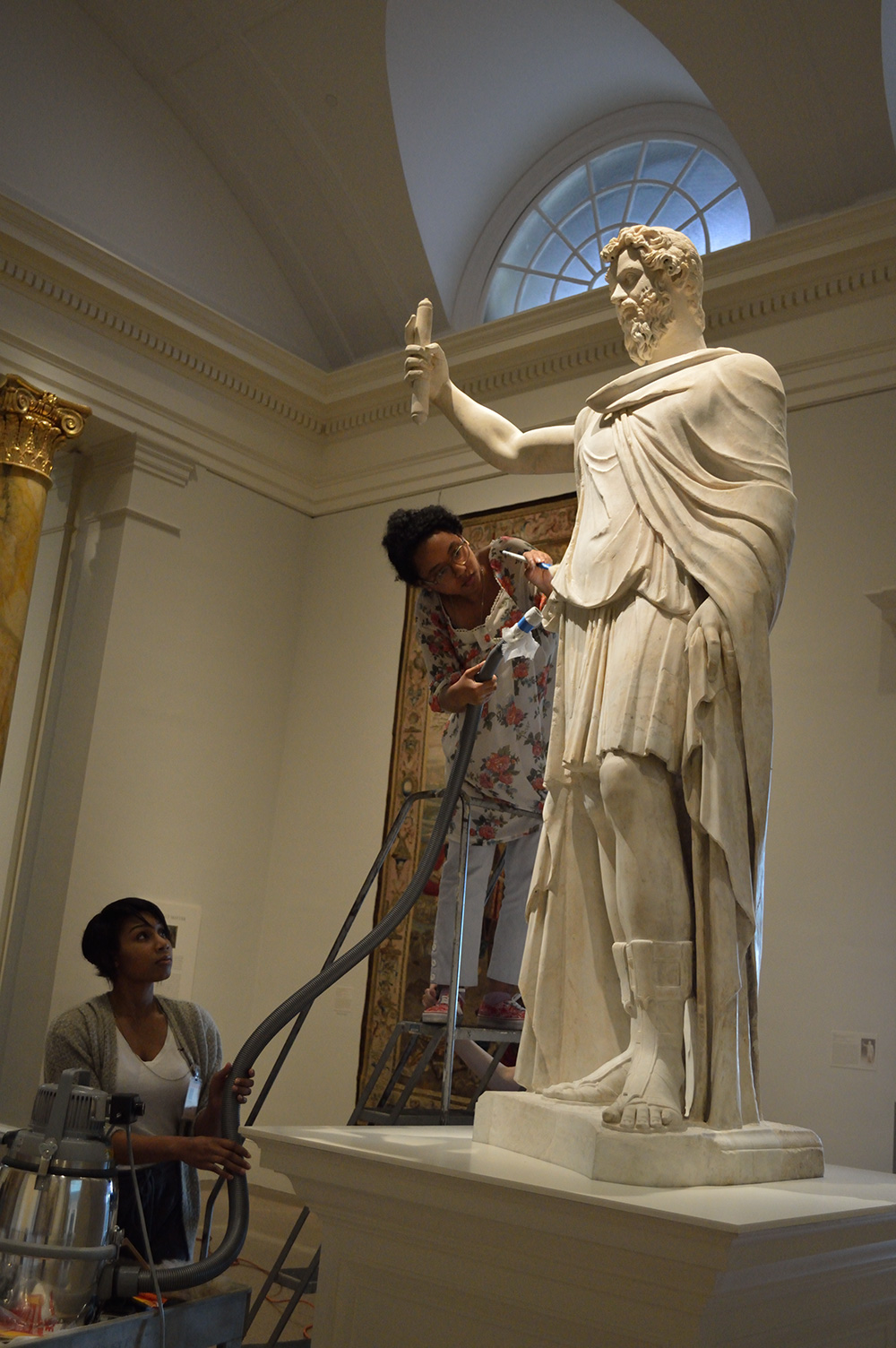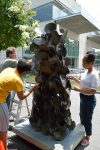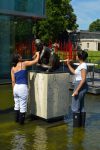Our names are Keisha Horne and Sydney Johnson, and we were the Andrew W. Mellon interns in Objects Conservation at VMFA during summer 2016.
Both of us are recent college graduates—Keisha from James Madison University and Sydney from Virginia Commonwealth University—with bachelors’ degrees in art history and a strong interest in objects conservation. We wanted to gain hands-on experience in a museum, and this internship provided the perfect opportunity to do just that. During our time at VMFA, we were exposed to a number of tasks relating to the conservation and safe handling of museum objects, including condition reporting, exhibition installation, object treatment, and materials research. By working in each of these areas, we gained a better understanding of the function of each of these activities within the museum.
 Condition reports are utilized by conservators and registrars when handling outgoing and incoming museum objects. A condition report documents the stability and overall condition of the object before and after shipment to ensure there are no changes during transportation. We learned how to create condition reports by examining three pieces loaned to the Peninsula Fine Arts Center (PFAC) in Newport News, VA. First we examined the objects and recorded their condition, making sure to include any damage or wear. We also annotated photographs with this same information. Later, while unpacking the pieces at the PFAC, we used those condition reports and annotated photographs to compare the condition of the objects with their condition prior to travel.
Condition reports are utilized by conservators and registrars when handling outgoing and incoming museum objects. A condition report documents the stability and overall condition of the object before and after shipment to ensure there are no changes during transportation. We learned how to create condition reports by examining three pieces loaned to the Peninsula Fine Arts Center (PFAC) in Newport News, VA. First we examined the objects and recorded their condition, making sure to include any damage or wear. We also annotated photographs with this same information. Later, while unpacking the pieces at the PFAC, we used those condition reports and annotated photographs to compare the condition of the objects with their condition prior to travel.
Travelling to PFAC as part of the VMFA team also allowed us to experience exhibition installation at a separate venue. Under the supervision of objects conservator Ainslie Harrison and art handler Randy Wilkinson, we learned how to properly unpack, inspect, and install the objects for the exhibition Game On: Sports in Ancient and Modern Art, which is on view at PFAC through Oct 9.

Our lesson in object treatment consisted of cleaning four indoor and outdoor sculptures currently on display at VMFA. We assisted in the treatment of the indoor sculpture under the supervision of Sheila Payaqui, Head of Sculpture and Decorative Arts Conservation, and outdoor sculptures under the supervision of Andrew Baxter, contract outdoor sculpture conservator from Bronze et. al.
The first was Septimius Severus, a marble sculpture located in the museum’s Tapestry Hall. For Septimius our cleaning technique involved using soft paint brushes to sweep dust towards the nozzle of a vacuum. A netting material was placed over the nozzle as a precaution in the event that any small fragments became detached from the sculpture. Only a light surface cleaning was needed for this piece, as the sculpture is indoors and is therefore protected from elements that would typically affect an outdoor sculpture such as harsh weather, animals, and pests.
When we treated the outdoor sculptures, a different approach was needed due to their location as well as the different materials used in their construction. In this case, the sculptures were made of cast bronze with a patina applied to two of the statues. When cleaning Bianca No. 2, only a light cleaning was necessary to remove spider webs and other debris, so we used soft cloths to gently clean the bronze without disturbing the chemical patina and wax that was previously applied to the sculpture.
The only difference between treating Captain Nemo’s Accumulation and Man and Vegetation was the type of wax applied. Although the same brand of wax was used to treat the surface of the sculptures, the wax used for Man and Vegetation contained a burnt umber pigment which gave the wax a deep brown hue that matched the patina of the sculpture seamlessly.
– Keisha Horne and Sydney Johnson
Keisha and Sydney’s internships were made possible through a grant from the Andrew W. Mellon Foundation, which was awarded to VMFA to support a joint project between the curatorial and conservation departments for the research and conservation of the outstanding African Art collection at the museum.

